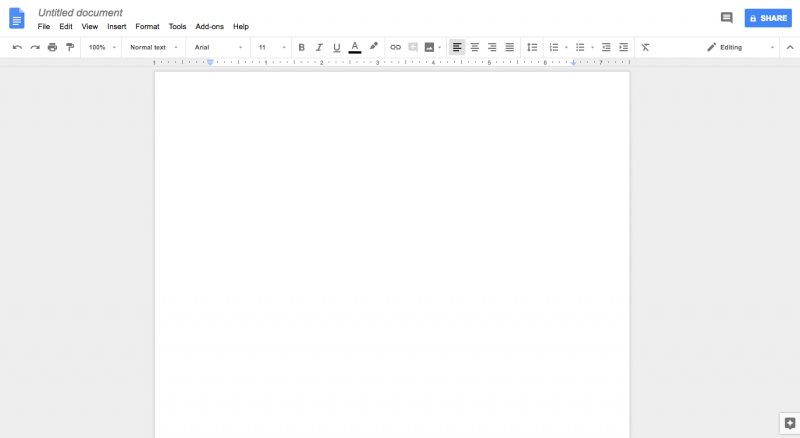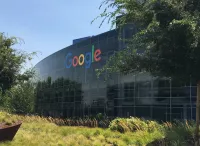Launched on April 24, 2012, Google Drive is a popular file-hosting and synchronization service developed by Google. It allows users to store files in the cloud, synchronize them across multiple devices, and easily share them with others. Google Drive offers a convenient web interface and dedicated apps for Windows, macOS, Android, and iOS devices, ensuring accessibility and offline functionality. Furthermore, it seamlessly integrates with Google's office suite, Google Docs Editors, which includes Google Docs, Google Sheets, and Google Slides, enabling collaborative editing of various document types. Files created or edited using Google Docs Editors are automatically saved within Google Drive, streamlining workflow and enhancing productivity.
July 2011: Dropbox Privacy Policy Controversy Impacts Google Drive Perception
Google Drive's launch in April 2012 coincided with the aftermath of a Dropbox privacy policy controversy from July 2011, further amplifying concerns about Google's approach to user data and privacy.
April 2012: Google Drive Initial Launch and Early Reviews
Following its April 2012 launch, Google Drive received mixed reviews, with praise for its features and integration with Google Docs but criticism for its user interface.
April 2012: Privacy Concerns Surface Around Google Drive
Immediately after its April 2012 launch, Google Drive faced criticism and scrutiny over its privacy policy, particularly regarding the broad rights Google claimed over user-stored content.
April 2012: Linux Software Development Announced and ChromeOS Integration
In April 2012, Google announced that they were working on Linux software for Google Drive. In the same month, Google's then-Senior Vice President, Sundar Pichai, stated that Google Drive would be tightly integrated with ChromeOS version 20.
April 24, 2012: Google Drive Launch
On April 24, 2012, Google launched Google Drive, a file-hosting and synchronization service. The service allows users to store files in the cloud, synchronize files across devices, and share files with others.
September 2012: Revision of Paid Storage Plans
In September 2012, Google revised its paid storage plans. Instead of adding the paid allocation to the existing free storage, the paid plan now represented the total storage capacity. For example, a 100 GB plan offered a total of 100 GB, not 115 GB as it did previously.
2012: Free Storage Increased to 10 GB
Continuing its trend of expanding storage options, Google increased the free storage allowance to 10 GB in 2012, further enhancing the value proposition of its services and providing users with ample space for their growing digital libraries.
February 2013: Integration of Third-Party Apps in Google Drive
In February 2013, Google revamped the "Create" menu in Google Drive to include third-party applications, giving them equal prominence to Google's own apps.
March 2013: Google Drive Downtime
Google Drive experienced downtime in March 2013, alongside other notable downtimes in later years.
March 2013: Release of Google Drive API for Third-Party Developers
March 2013 marked a significant step in Google Drive's evolution as Google released its API to third-party developers. This API empowers developers to create collaborative applications that enable real-time editing, further expanding the Drive ecosystem.
August 2013: Google Services Outage Impacts Global Internet Traffic
In August 2013, an outage affecting all Google services, including Google Drive, led to a 40% drop in global internet traffic according to CNET.
November 12, 2013: Google Drive Reaches 120 Million Active Users
On November 12, 2013, Google announced that Google Drive had surpassed 120 million active users, marking a significant milestone in its growth.
November 2013: No News on Linux Software
As of November 2013, there were no updates or news regarding the development of Linux software for Google Drive, leaving its release uncertain.
2013: Free Storage Increased to 15 GB
In 2013, Google made a significant change to its storage policy by increasing the free storage allowance across Gmail, Google Drive, and Google Photos to a unified 15 GB. This move simplified storage management for users, who could now utilize the shared storage pool across multiple services.
2013: Google Begins Encrypting Data in Transit
In 2013, prompted by revelations of government surveillance, Google started encrypting data in transit between its data centers, enhancing user privacy and data security.
March 2014: Google Drive Storage Plan Price Reduction
In March 2014, Google significantly reduced the prices of its Drive storage plans, making them much more affordable than competitors like Dropbox and OneDrive. The new pricing offered 100 GB for $1.99/month, 1 TB for $9.99/month, and 10 TB for $99.99/month.
April 2014: Separation of Document and Spreadsheet Editing into Standalone Apps
Google made a significant change to its mobile app strategy in April 2014 by moving document and spreadsheet editing capabilities from the main Google Drive app to separate, standalone applications: Google Docs, Google Sheets, and Google Slides.
June 2014: Improved Accessibility Features for Google Drive
In June 2014, Google implemented updates to enhance the accessibility of Google Drive for visually impaired users. The updates included improvements to keyboard accessibility, better support for zooming and high contrast mode, and increased compatibility with screen readers.
June 25, 2014: Google Drive Enterprise Launch
On June 25, 2014, Google announced Google Drive Enterprise, a business-focused version of Google Drive, at the Google I/O conference. The service offered features like unlimited storage, advanced reporting, and enhanced admin controls.
September 30, 2014: Google Drive for Education Launch
Google launched Drive for Education on September 30, 2014, offering unlimited storage and support for large files to Google Apps for Education users.
October 1, 2014: Google Drive User Base Grows to 240 Million
Google Drive continued its rapid user growth, reaching 240 million monthly active users by October 1, 2014, indicating strong adoption and market penetration.
October 2014: Google Drive Downtime
Google Drive experienced downtime in October 2014, alongside other notable downtimes.
October 2014: Android App Update with Material Design and New Features
In October 2014, Google updated its Android app with a refreshed Material Design interface, improved search functionality, the ability to add a personalized message when sharing files, and a new PDF viewer.
2014: Early Stages of Google Drive for Work
Following its launch in 2014, Google Drive for Work began establishing itself within the market, focusing on business-specific features and security.
2014: Website Visual Overhaul and Performance Improvements
Google Drive's website underwent a significant visual redesign in 2014, resulting in a completely new look and improved performance. This update also simplified common tasks, such as viewing recent activity and sharing files, with the introduction of single-click actions.
September 2015: Google Drive Reaches One Million Organizational Paying Users
In September 2015, Google Drive achieved a milestone by surpassing one million organizational paying users, indicating its increasing popularity among businesses.
September 2015: Google Drive for Work ISO/IEC 27018:2014 Compliance
In September 2015, Google Drive for Work achieved compliance with the ISO/IEC 27018:2014 standard for security and privacy. This confirmed Google's commitment to data protection and transparency for business users.
September 21, 2015: Google Drive Surpasses One Million Paying Organizations
On September 21, 2015, Google announced that over one million organizations were paying for Google Drive, demonstrating its increasing value proposition for businesses.
January 2016: Google Drive Downtime
Google Drive experienced downtime in January 2016, alongside other notable downtimes.
January 2016: Google Drive Outage Resolution
In January 2016, Google addressed a Google Drive outage, providing information to The Next Web.
February 2016: Positive Review from PC Magazine
In February 2016, PC Magazine published a positive review of Google Drive, praising its collaboration features and generous storage but noting some UI complexities and offline editing limitations.
August 2016: Visual and Functional Website Updates
August 2016 brought further updates to the Google Drive website, with changes to several visual elements. These included an updated logo, a refreshed search box design, and a shift in the primary color from red to blue. The update also enhanced the functionality for downloading files, allowing users to compress and download large items into multiple 2GB .zip files with improved naming conventions and better handling of Google Forms.
August 2016: End of Support for Older Android Versions
Citing its mobile app update policy, Google Drive ended support for Android devices running Android 4.0 "Ice Cream Sandwich" or older versions in August 2016. The app would continue to function on these devices, but updates were no longer guaranteed.
September 2016: Natural Language Processing for Search on Google Drive Website
In September 2016, Google enhanced the search functionality on the Google Drive website by adding natural language processing. This allows users to perform more intuitive searches using conversational language, such as "find my budget spreadsheet from last December."
September 2016: Team Drives Introduced
In September 2016, Google introduced Team Drives, later renamed Shared Drives, as a way for teams to collaborate on documents within Google Workspace.
September 2016: Introduction of Quick Access in Android App
The Quick Access feature, introduced in the Google Drive Android app in September 2016, utilizes machine learning to predict the files a user might need before they even start typing, enhancing user experience and efficiency.
October 2016: Support Dropped for Older Computer Software Versions
In October 2016, Google announced that it would no longer support versions of the Google Drive computer software older than one year, encouraging users to update to the latest versions for continued support and compatibility.
December 2016: Introduction of "Backups" Section in Android App and Website
In December 2016, Google introduced a dedicated "Backups" section in the Android app and on the website. This section provides users with an overview of their Android device and app backups stored in Drive, including details such as backup size and the option to delete them.
December 2016: Yearly Payment Option Introduced for Storage Plans
In December 2016, Google introduced the option for users to pay for additional Google Drive storage on a yearly basis, offering a discounted rate compared to monthly payments. This provided users with more flexibility and cost savings when managing their storage needs.
February 2017: Integration of Drive and Google Search App on Android
February 2017 saw further integration of Google services as Drive became integrated with the Google Search app on Android devices. Users could now search for keywords within the Search app and directly access relevant files stored in Drive through the "In Apps" tab.
March 2017: Google Drive User Base Grows to 800 Million
Google Drive's user base continued to expand significantly, reaching 800 million active users by March 2017, solidifying its position as a leading cloud storage and collaboration platform.
March 2017: Quick Access Expansion Announcement
In March 2017, Google announced that the Quick Access feature, previously exclusive to the Android app, would be expanded to iOS and the web interface.
March 2017: Drive File Stream Introduction
In March 2017, Google introduced Drive File Stream, a desktop application specifically designed for G Suite (later renamed Google Workspace) customers. Available for Windows and macOS computers, Drive File Stream allowed users to access Google Drive files and folders directly from their operating system's file explorer, eliminating the need to use a web browser.
May 2017: Google Drive Surpasses Two Trillion Stored Files
In May 2017, Google announced that Google Drive had surpassed two trillion files stored, highlighting the platform's massive scale and the growing volume of data entrusted to it by users.
May 2017: Two Trillion Files Stored on Google Drive
By May 2017, Google Drive had reached an impressive milestone with over two trillion files stored on the service, highlighting its massive scale and usage.
June 2017: Backup and Sync App Announced
In June 2017, Google announced "Backup and Sync," a new app set to replace the separate Google Drive and Google Photos desktop apps. This unified app aimed to streamline the backup and sync experience for desktop users.
June 2017: Announcement of "Backup and Sync" App
In June 2017, Google announced the upcoming release of its "Backup and Sync" application. This new tool would allow users to synchronize any folder on their computer with Google Drive, streamlining file storage and access.
July 12, 2017: Release of "Backup and Sync" App
On July 12, 2017, Google released its "Backup and Sync" application, enabling users to synchronize any folder on their computer with Google Drive, making it easier to back up and access files across devices.
July 2017: Backup and Sync Release
Google released Backup and Sync, its new downloadable software for individual users of Google Drive, in July 2017. Designed as a replacement for the discontinued Google Drive desktop app, Backup and Sync primarily allowed users to select specific folders on their computers for continuous synchronization with their Google Drive accounts.
July 2017: Computer App Overhaul and New Features
In July 2017, Google released a completely overhauled computer app for Google Drive. The new app allowed for backing up specific folders on the user's computer and introduced a Quick Access feature to predict the files users need.
September 2017: Google Drive Downtime
Google Drive experienced downtime in September 2017, alongside other notable downtimes.
September 2017: Google Drive Desktop App Discontinuation Announced
Google announced in September 2017 that it would discontinue the Google Drive desktop app in March 2018 and end support for the app in December 2017.
December 2017: Support Ends for Google Drive Desktop App
Google ended support for the Google Drive desktop app in December 2017, marking the app's official retirement and prompting users to switch to alternative solutions like Backup and Sync.
March 2018: Google Drive Desktop App Discontinued
In March 2018, as previously announced, Google discontinued the Google Drive desktop app, encouraging users to transition to the newer Backup and Sync app.
May 2018: Storage Plans Moved to Google One
Google announced in May 2018 that its storage plans, including the free 15 GB tier, would be migrated to Google One, its subscription service that offered expanded storage options, family sharing, and other benefits. This move streamlined Google's storage offerings under a single brand.
July 2018: Google Drive Surpasses One Billion Active Users
By July 2018, Google Drive had surpassed one billion active users, marking a significant milestone in its growth and adoption.
July 2018: Drive Enterprise Edition Released
In July 2018, Google launched Drive Enterprise, a standalone version of Drive for businesses not requiring the full Google Workspace suite. This edition included Docs, Sheets, Slides, and collaboration features.
2018: Introduction of Google One
In 2018, Google rebranded its paid storage plans as "Google One," emphasizing their broader application beyond Google Drive. This came with the introduction of a 200 GB plan for $2.99/month and an increase of the $9.99 plan to 2 TB at no extra cost.
2019: Google Acknowledges Drive Sharing Spam Issue
In 2019, Google acknowledged a spam issue in Google Drive where users received unsolicited shared drives.
January 2020: Google Drive Downtime
Google Drive experienced downtime in January 2020, alongside other notable downtimes.
May 4, 2020: Privacy Screen Feature Rollout
On May 4, 2020, Google introduced a new feature called Privacy Screen in version 4.2020.18204 of the Google Drive app for iOS and iPadOS. This feature enhanced user privacy by requiring Face ID or Touch ID authentication every time the app was opened.
October 2020: Google Workspace Integration and Rebranding
In October 2020, Google rebranded G Suite to Google Workspace. As a key component of Google Workspace, Google Drive offered unlimited storage, advanced file audit reporting, enhanced administration controls, and greater collaboration tools for teams as part of select Google Workspace plans.
November 11, 2020: Discontinuation of Unlimited Storage for Google Docs File Formats
On November 11, 2020, Google announced that it would no longer offer unlimited storage for files stored in Google Docs formats, including photos and videos uploaded in "High quality" to Google Photos. This change was set to take effect on June 1, 2021.
December 2020: Google Drive Downtime
Google Drive experienced downtime in December 2020, alongside other notable downtimes.
2020: Shared Drives Enhancements
In 2020, Shared Drives gained features like granular access controls and public folder sharing, enhancing team collaboration and file management capabilities.
June 1, 2021: End of Unlimited Storage and Implementation of Storage Cap
As of June 1, 2021, Google's policy change regarding unlimited storage came into effect. Files stored in Google Docs formats, along with photos and videos in "High quality," now count towards the 15 GB cap.
July 2021: Google Drive for Desktop Launch
In July 2021, Google released Google Drive for Desktop, a new application for Windows and Mac, replacing both "Backup and Sync" and "Drive File Stream" to provide a unified experience for accessing Google Drive files locally.
September 13, 2021: Change in URL Structure for Existing Files
On September 13, 2021, Google modified the URL structure of some existing files for enhanced security measures.
September 2021: New 5 TB Storage Plan
In September 2021, Google introduced a new storage plan offering 5 TB of storage for $24.99 per month, catering to users with larger storage needs.
October 1, 2021: End of Support for Backup and Sync
Google ended support for Backup and Sync on October 1, 2021, encouraging users to transition to Google Drive for Desktop, the unified replacement for both Backup and Sync and Drive File Stream.
2021: Google Workspace Exceeds 3 Billion Users
By 2021, Google Workspace, which includes Google Drive, had surpassed 3 billion users globally, making it one of the most widely used productivity and collaboration suites.
2021: Over 5,300 Public Apps Available in Google Workspace Marketplace
By 2021, the Google Workspace Marketplace boasted a diverse collection of over 5,300 public applications, showcasing the platform's growth and the richness of its app ecosystem.
2021: Client-Side Encryption in Google Drive
In 2021, Google Drive introduced a significant security enhancement: client-side encryption. This feature provides an extra layer of security by encrypting data on the user's device before it is even sent to Google's servers.
2021: Google Drive Introduces User Blocking Feature
In 2021, Google introduced a user blocking feature to Google Drive, addressing the spam issue.
July 2022: Google Workspace for Education offers 100 TB of Storage
In July 2022, Google Workspace for Education, designed for educational institutions and universities, started providing a generous 100 TB of storage. Universities with over 20,000 Workspace users have the option to increase this limit further.
February 2023: Introduction (and Removal) of User File Creation Limit
In February 2023, Google quietly implemented a 5 million file creation limit for users. This limit was met with negative feedback from users and was subsequently removed.
April 3, 2023: Removal of 5 Million File Creation Limit
Following user backlash and just a day after its public discovery, Google removed the 5 million file creation limit.
2023: Google Workspace Reaches 9 Million Paying Organizations
As of 2023, Google Workspace had reached 9 million paying organizations, indicating its strong position in the enterprise market and the value it provides to businesses worldwide.
2023: Google Drive for Desktop Bug and Fix
In 2023, a bug in Google Drive for Desktop caused a small number of files to disappear from users' accounts over a six-month period. Fortunately, Google addressed this issue by releasing a fix in December of the same year, restoring the affected files and preventing further data loss.
April 2024: Night Mode Theme Support Introduced
In April 2024, Google introduced support for a night mode theme to its users, providing a darker interface option to reduce eye strain, particularly in low-light conditions.
2024: Current Storage Plans Offered by Google
As of 2024, Google offers various storage plans for users to choose from, providing a range of options to meet different needs and budgets.
2024: Integration of AI Features in Google Drive
In 2024, Google began rolling out new AI features for Google Drive and other Workspace tools. These features are powered by Google's Gemini LLM and are currently available to users with Google One AI Premium or specific organizational add-ons.
Mentioned in this timeline

Google Docs is a free web-based word processor offered by...

Google LLC is a multinational technology company specializing in online...

Ice cream is a frozen dessert primarily composed of milk...

An apple is a widely cultivated edible fruit originating in...

Sundar Pichai born as Pichai Sundararajan is a prominent figure...

News encompasses information about current events disseminated through various media...
Trending

John Stamos is an American actor and musician who rose to fame as Blackie Parrish on General Hospital earning a...

9 months ago Ilia Malinin at Worlds, skating tribute and a skating club's tragic past.

Te fimo L pez is an American professional boxer who has held world championships in two weight classes He currently...

4 months ago Audit Questions Moore's Budget Claims, Scrutinizes Maryland Leases & Overpayments

Kumail Nanjiani is a Pakistani-American comedian and actor known for his roles in Silicon Valley and The Big Sick the...

2 months ago Lindsey Vonn's record-breaking career, teaching older athletes, and Milan Olympics ad.
Popular

Candace Owens is an American conservative political commentator and author...

Ilhan Omar is an American politician currently serving as the...

XXXTentacion born Jahseh Dwayne Ricardo Onfroy was a controversial yet...
Matt and Ross Duffer known as the Duffer Brothers are...

Tom Cotton is an American politician and Army veteran currently...
The Kennedy Center Honors are annual awards recognizing individuals and...